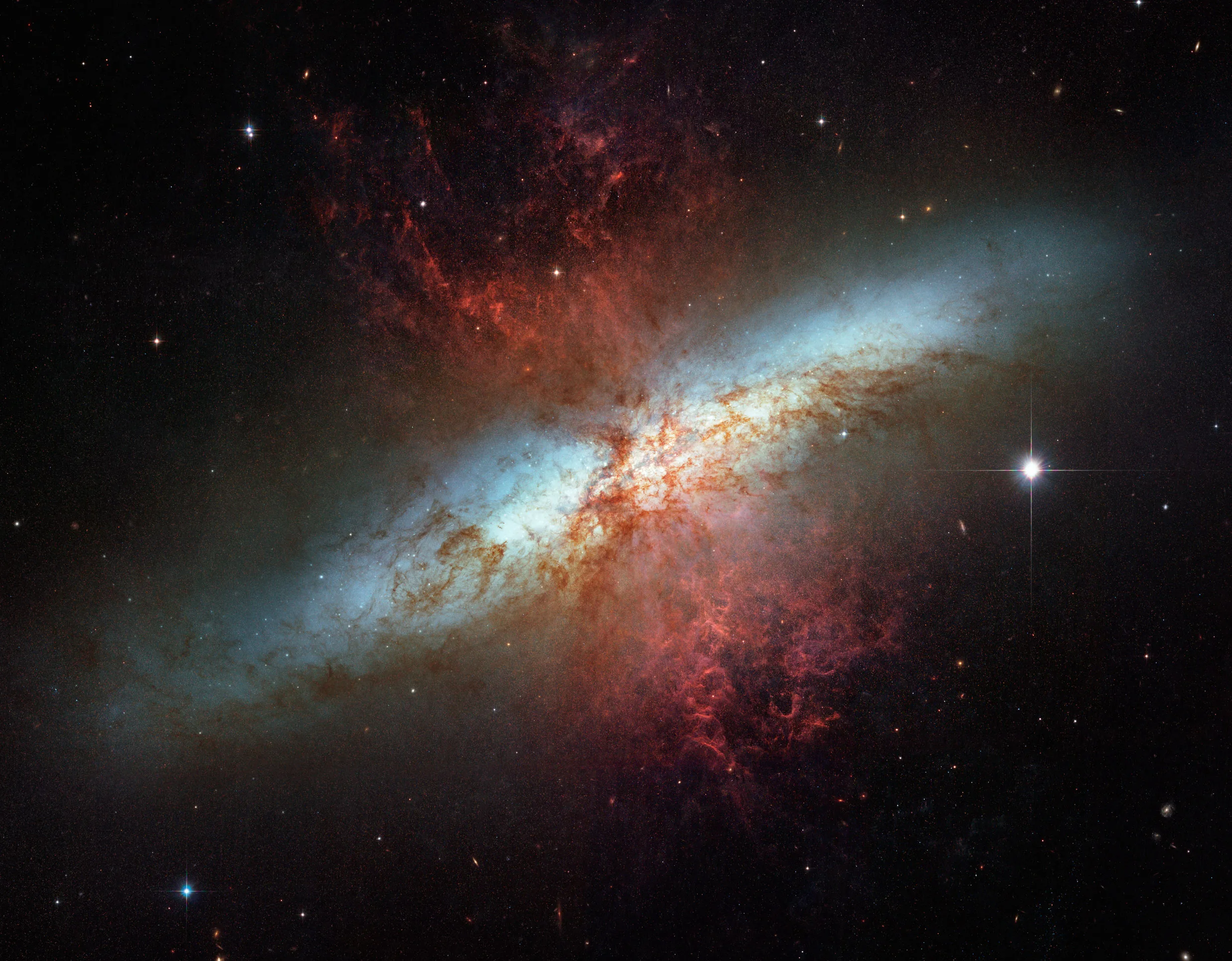Stars Born in the Wind
The Story of M82's Southern Arcs
M82: The Starburst Galaxy
Galactic outflows, commonly observed across the universe, play a crucial role in enriching the circumgalactic (CGM) and intergalactic medium (IGM) with metals and energy. These outflows are typically driven by hot gas bubbles formed by numerous supernovae (SNe) within a galaxy, which expand outward and entrain dust along with cold and warm gasses. Although launched on sub-parsec scales, starburst outflows can have dramatic impacts on the large-scale galactic environment by influencing star formation.
M82 stands out as the best galaxy in the local universe (at a distance of 3.6 Mpc) for detailed studies of starburst-driven outflows. This edge-on galaxy hosts a prototypical nuclear starburst, which drives strong, multiphase, bipolar outflows (``superwinds”) along its minor axis. The starburst activity is widely attributed to a close encounter with Milky Way-mass M81 within the last ~1 Gyr. Ongoing interactions with both M81 and the LMC-like NGC 3077 further complicate its environment, generating significant tidal debris composed of streams and filaments of HI gas that extend out to approximately 10 kpc along the minor axis. This debris forms part of an extensive HI structure that bridges M82 with M81 and NGC 3077, making it an exceptional target for studying the full impact of outflows on galactic and intergalactic environments.
In this context, arcs of stars ~5 kpc south of M82 – henceforth the Southern Arcs — are of particular interest. We studied stars in these Southern Arcs using the Hubble Space Telescope’s (HST) Wide Field Camera 3 (WFC3). By deriving detailed SFHs, we aimed to investigate the time evolution of M82’s outflow and its role in linking star formation across galactic scales.
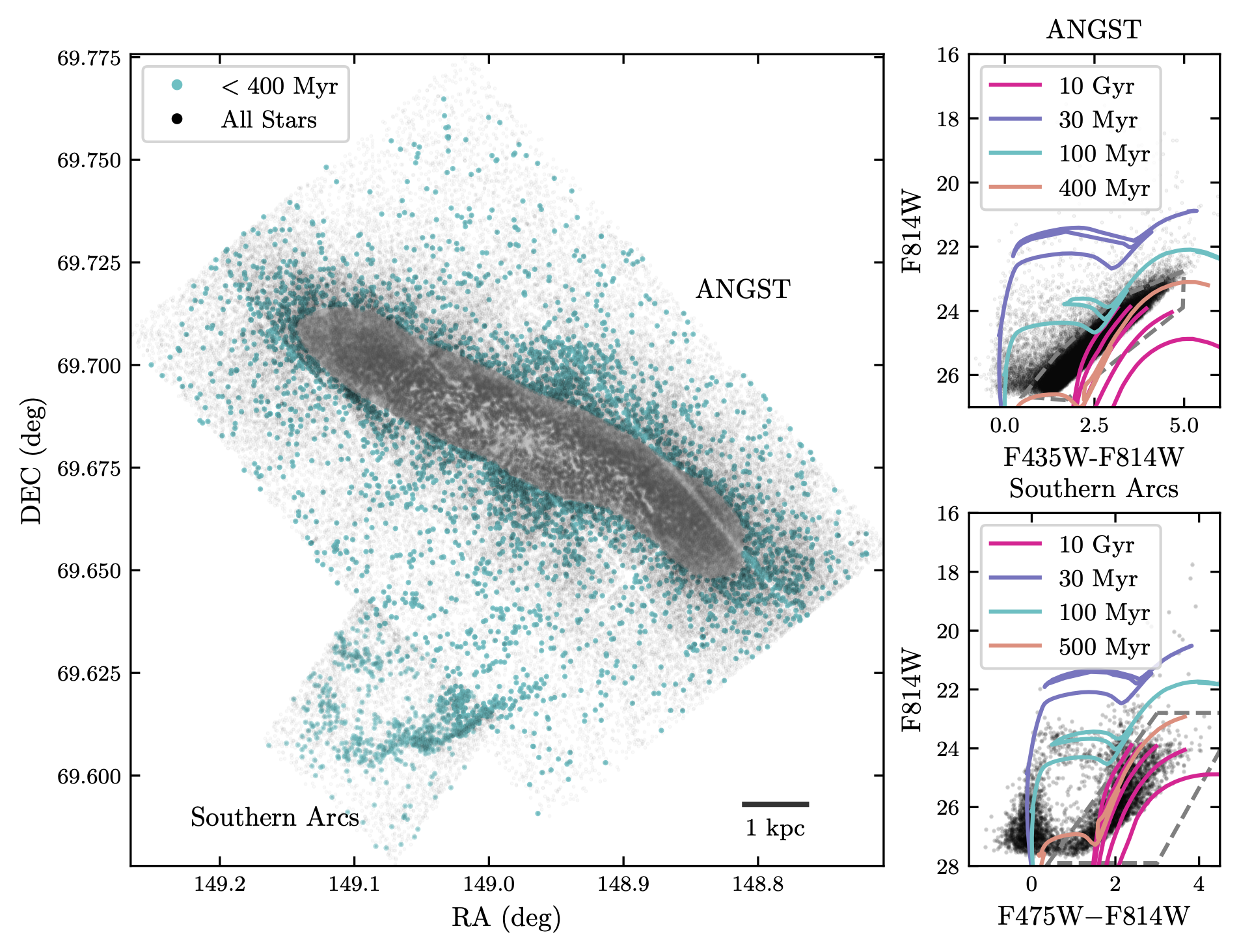
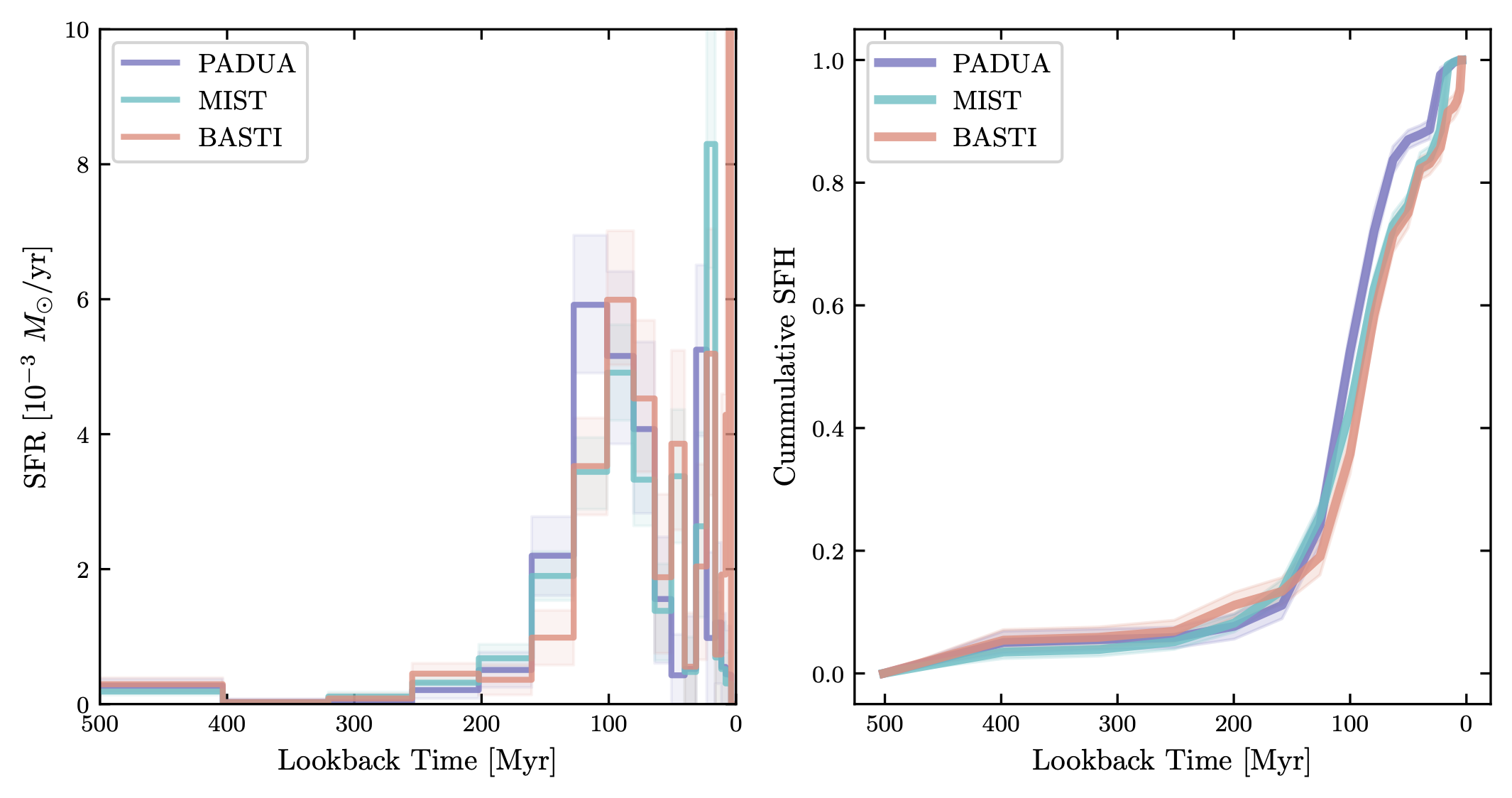
What does the data say?
- The Southern Arcs formed approximately 85% of its stellar mass between ~150 Myr and ~70 Myr ago, followed by a brief pause in star formation. The remaining 15 % of its stellar mass formed after ~30 Myr ago.
- SFHs derived from the ANGST dataset along with age distributions of star clusters in the disk show that the SFH of the M82 disk is correlated with the SFH of the Southern Arcs, especially when considering the ~100$ Myr burst of star formation.
- A multi-wavelength map of the M82 field, including the resolved young stars, suggests that the starburst-driven outflow may serve as the common mechanism linking star formation across regions.
- Additionally, the stars formed in the two bursts in the Southern Arcs are spatially coincident on scales of ~200 pc — a striking result!
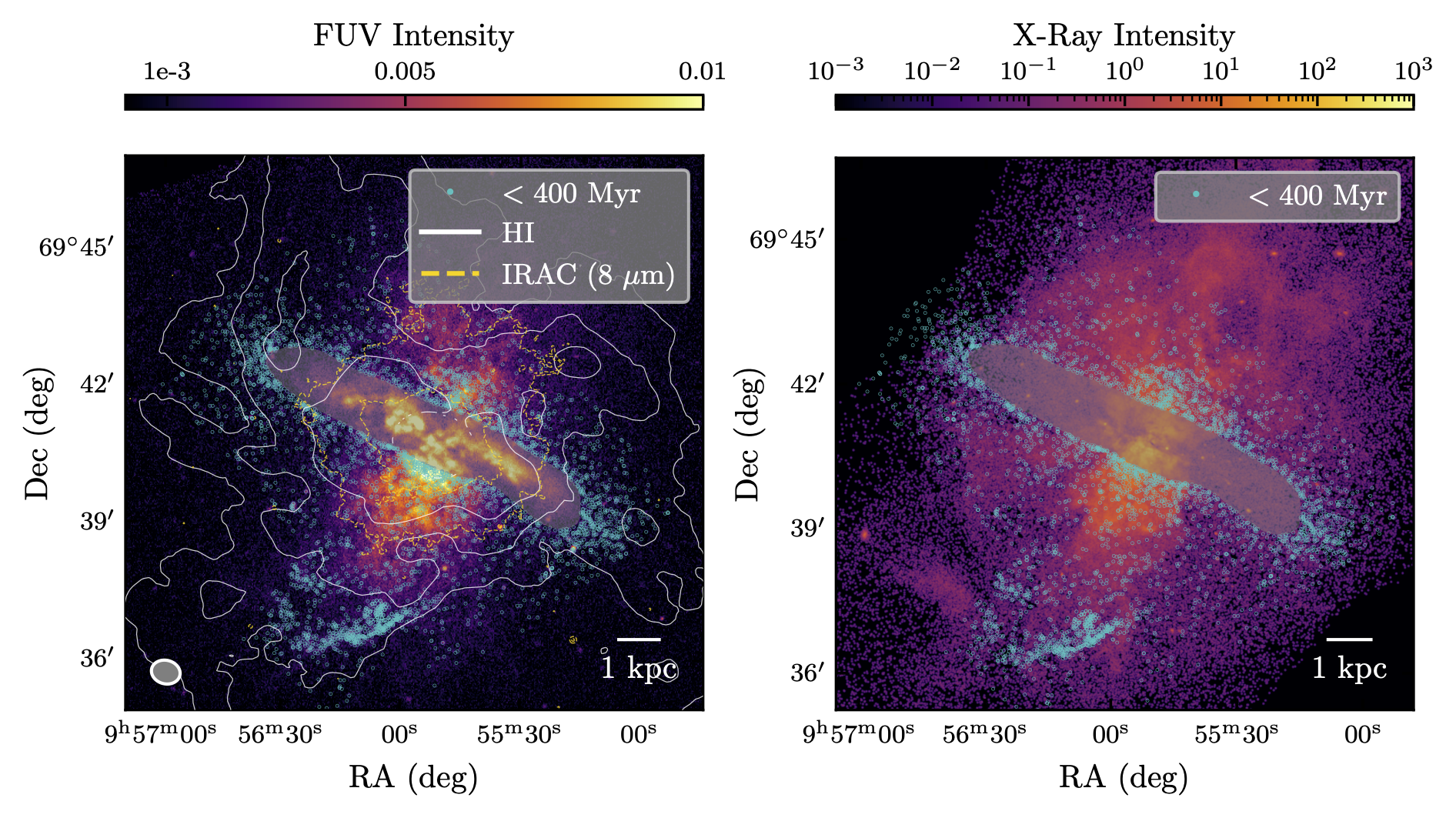
Two plausible stories for the formation of the Southern Arcs
-
Shock Induced Star Formation: Star formation in the Southern Arcs could be triggered by shocks produced by the outflows. These shocks, generally linked to some form of interaction between the hot and cool phases of the outflow or the ambient medium, could have encountered colder, denser circumgalactic medium (CGM) clouds and compressed the gas, leading to gravitational collapse and subsequent star formation along shock fronts. This mode of star formation is analogous to AGN-jet induced star formation observed in Centaurus A’s halo. In this scenario, multiple starburst episodes in the disk results in a bursty outflow, that triggers multiple generations of co-spatial star formation in the Southern Arcs’ progenitor cloud.
-
Direct Star Formation within the Outflow: Following the starburst episode ~100 Myr ago in the M82 disk and corresponding launch of the outflow, stars could have directly formed within the cooler phases of the outflow that reached densities above the star-forming threshold. Large cool clouds, which have been either launched from the disk or precipitated out of the outflow have been observed in M82. Assuming these cool clouds are traveling ballistically, if stars formed within them, they would inherit the velocity of the clouds and co-move on ballistic trajectories. If such clouds containing populations of co-moving stars further encountered a second CGM cloud or piece of tidal debris from the interaction with M81, the resulting shock or compression could result in a second generation of weaker star formation within the same clouds. These new stars, formed ~30 Myr ago, would be roughly co-spatial with the first generation.
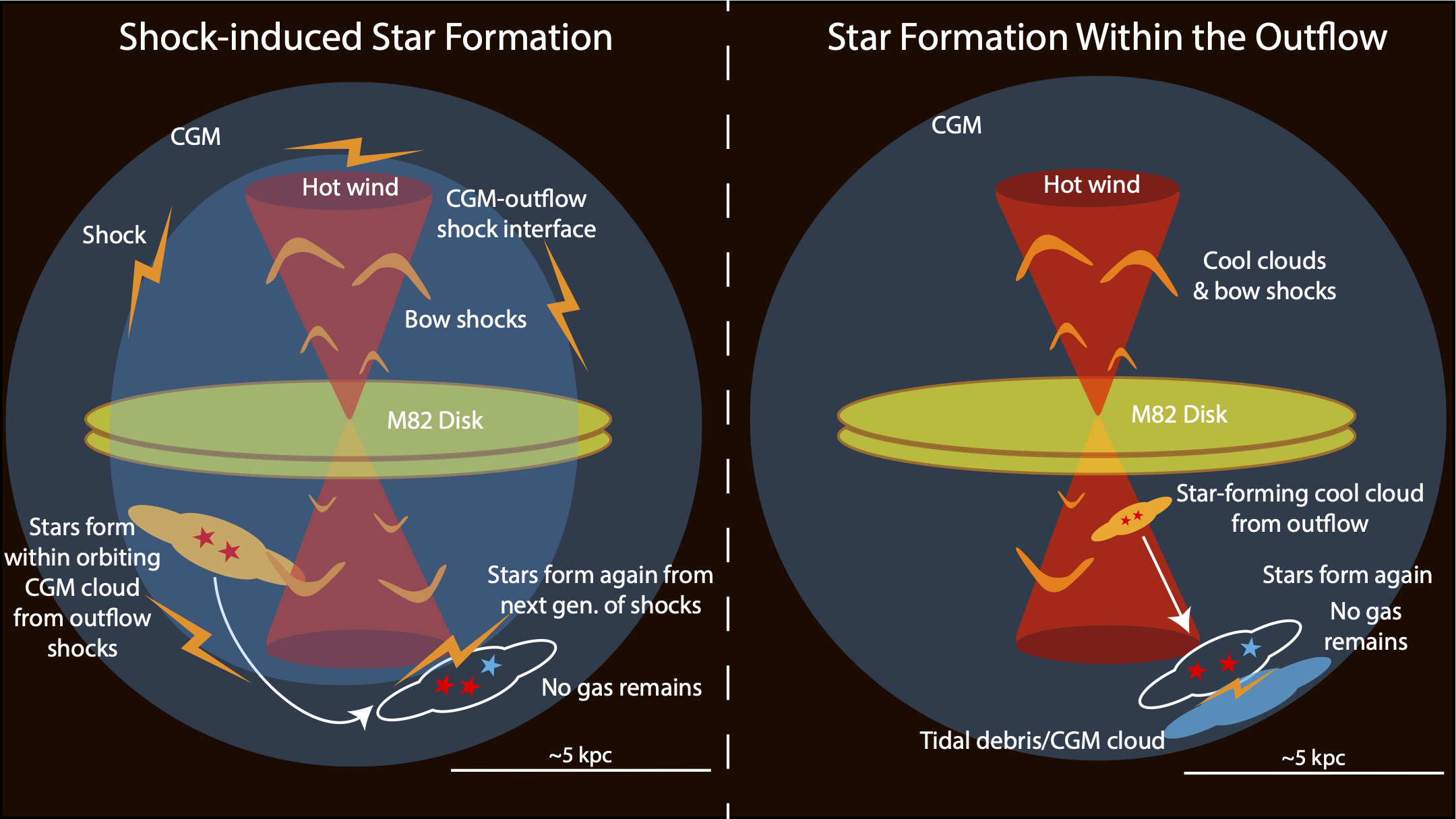
Of course there are caveats!
The two scenarios we propose for the formation of the Southern Arcs involve highly non-linear, multi-phase gas physics that is inherently difficult to model. Each depends on a range of physical parameters—such as the detailed starburst history of M82, the efficiency of supernova feedback, wind mass-loading, the galaxy’s dynamical mass distribution, and the nature of its environment, including the composition, density, and morphology of CGM clouds. Many of these factors are challenging to constrain observationally, making it difficult to uniquely favor one scenario over the other based on theoretical grounds alone.
Nevertheless, we suggest a promising observational avenue for distinguishing between these scenarios: measuring the metallicities of stars from the two stellar populations in the Southern Arcs. If the stars from the two populations have similar metallicities, a scenario where shocks compressed the same cloud multiple times may be favorable. If the metallicities are significantly different, the second scenario of stars forming directly within the outflow and involving multiple clouds may be more likely. While both scenarios have their own challenges and uncertainties, such metallicity measurements offer a concrete path forward to better constrain the physical origin of the Southern Arcs.
Read more about this research in my peer reviewed paper in the Astrophysical Journal! (Rao et al., 2025). All references for this article can be found within the paper.
